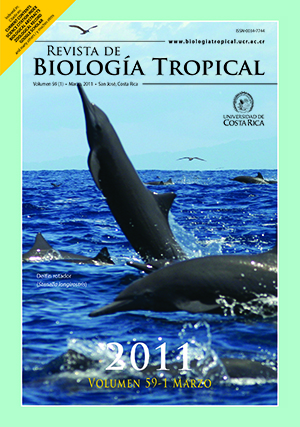Abstract
Hurricanes have increased in strength and frequency as a result of global climate change. This research was conducted to study the spatio-temporal distribution and changes of Thalassia testudinum, the dominant species in Bahia de la Ascension (Quintana Roo, Mexico), when affected by heavy weather conditions. To complete this objective, a 2001 Landsat ETM+ image and the information from 525 sampling stations on morpho-functional and coverage of T. testudinum were used, and the seeds generated for the classification of eight benthic habitats. To quantify the changes caused by two hurricanes, we used two images, one of 1988 (Gilberto) and another of 1995 (Roxanne); other three data sets (2003, 2005 and 2007) were also used to describe the study area without major weather effects. Six categorial maps were obtained and subjected to analysis by 8 Landscape Ecology indexes, that describe the spatial characteristics, structure, function, change of the elements (matrix-patch-cor-ridor), effects on ecosystems, connectivity, edges, shape and patch habitat fragmentation. Models indicate that T. testudinum may be classified as a continuum (matrix), since the fragments were not observed intermittently, but as a progression from minimum to maximum areas in reference to their coverage (ecological corridors). The fragments do not have a regular shape, indicating that the impacts are recent and may be due to direct effects (high-intensity hurricanes) or indirect (sediment). Fragments of type “bare soils” have a discontinuous distribu-tion, and are considered to be the sites that have remained stable over a long timescale. While more dense cover-age areas (“beds”, “medium prairie” and “prairie”) have low fragmentation and high connection of fragments. Features have an irregular perimeter and radial growth of formal; suggesting that the impact of meteors has no effect on the resilience of T. testudinum in this ecosystem, indicating good environmental quality to grow in this bay.
Comments

This work is licensed under a Creative Commons Attribution 4.0 International License.
Copyright (c) 2011 Revista de Biología Tropical






